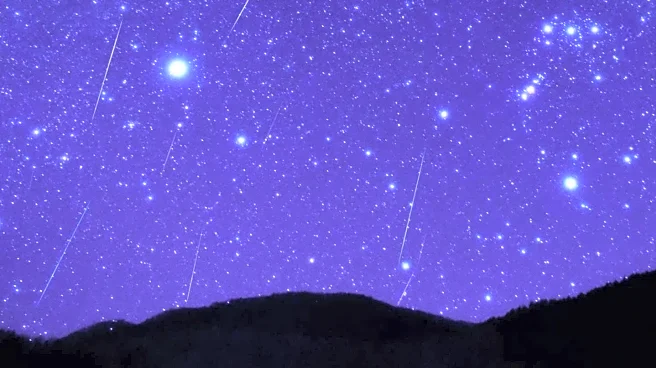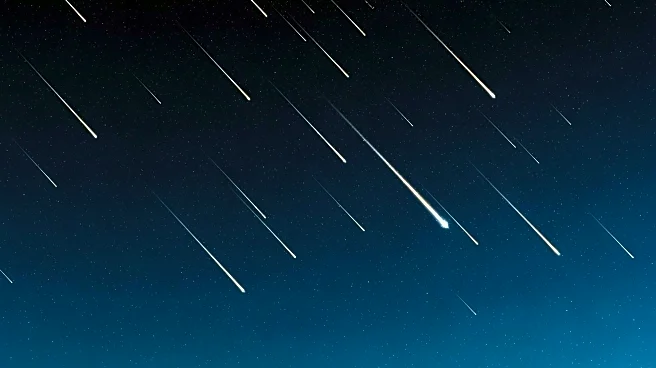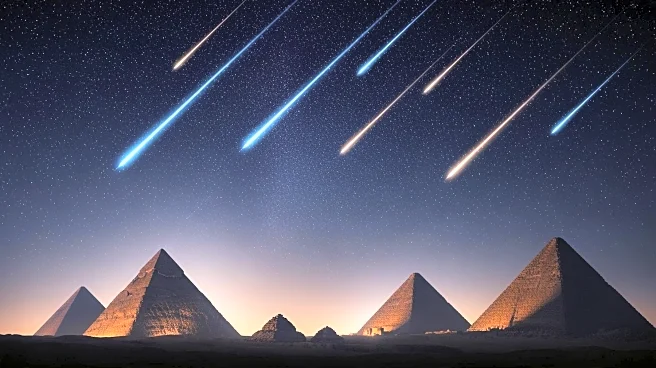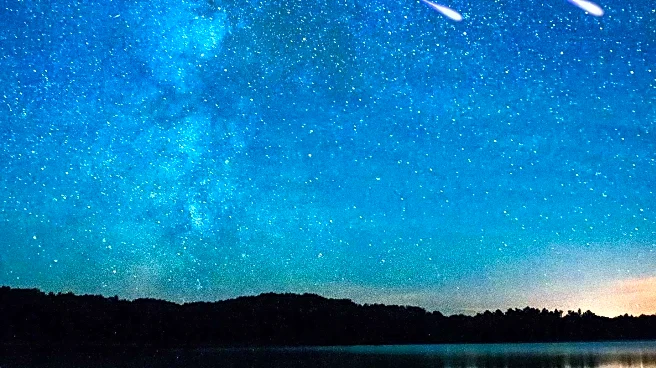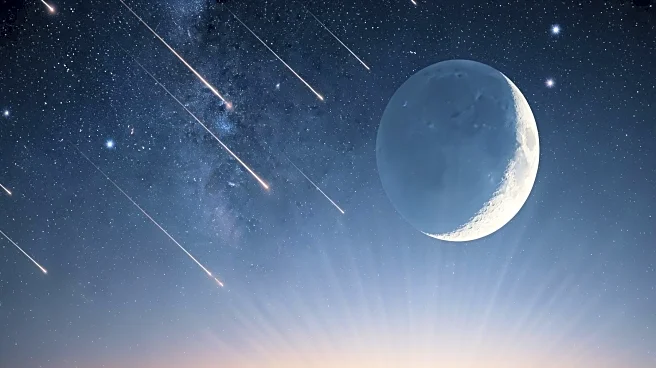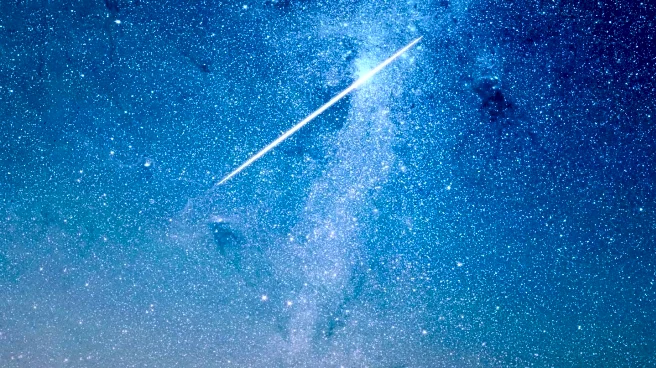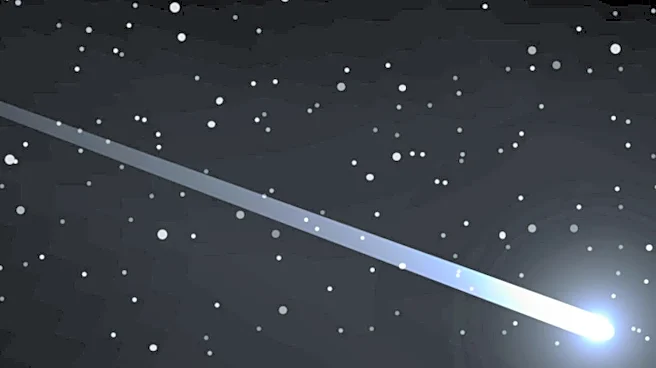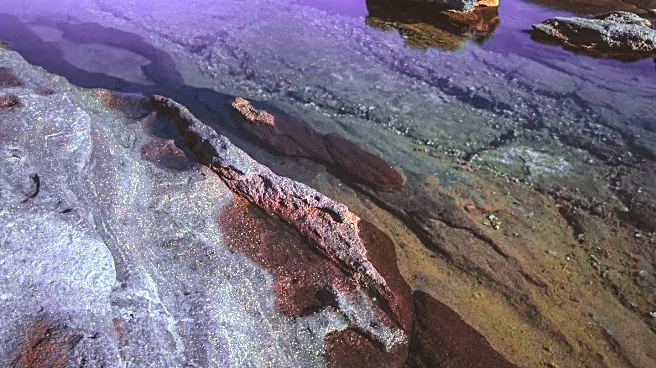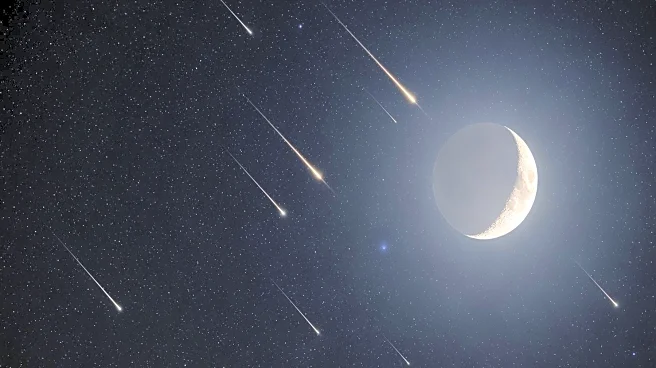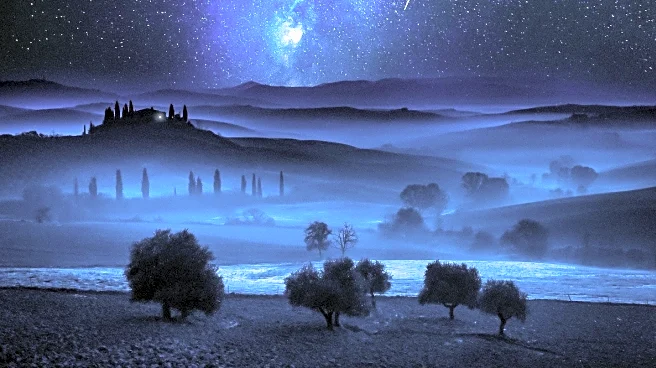What's Happening?
The Orionid meteor shower, an annual celestial event, reached its peak from October 21 to 23, 2025, providing a stunning display for stargazers. This meteor shower occurs when Earth passes through the
debris left by Halley's Comet, resulting in fiery shooting stars visible in the night sky. Photographer Osama Fathi captured a remarkable image of the meteors over Lake Qarun in Egypt on October 19, as the shower began to intensify. The composite image was created using a Nikon Z6 camera, combining a three-minute exposure with multiple 10-second shots of meteors. The peak coincided with a new moon, offering a dark sky that enhanced the visibility of even the faintest meteors.
Why It's Important?
The Orionid meteor shower is a significant event for both amateur and professional astronomers, as it provides an opportunity to observe and photograph meteors in optimal conditions. The event draws attention to the wonders of the night sky and encourages public interest in astronomy. For photographers and skywatchers, the shower offers a chance to capture unique images and engage with the broader community of space enthusiasts. The visibility of the meteors, especially during a new moon, highlights the importance of dark skies for astronomical observations, emphasizing the need for efforts to reduce light pollution.
What's Next?
Although the peak of the Orionid meteor shower has passed, stargazers can still enjoy the spectacle in the following days. According to Robert Lunsford of the American Meteor Society, the meteor rates will decrease slowly, allowing for continued viewing opportunities from October 24 to 26. During this period, observers can expect to see more than 10 meteors per hour from rural dark skies. The radiant point of the meteors will shift eastward into the constellation Gemini, offering a slightly different viewing experience. This ongoing visibility provides additional opportunities for photographers and enthusiasts to capture the event.
